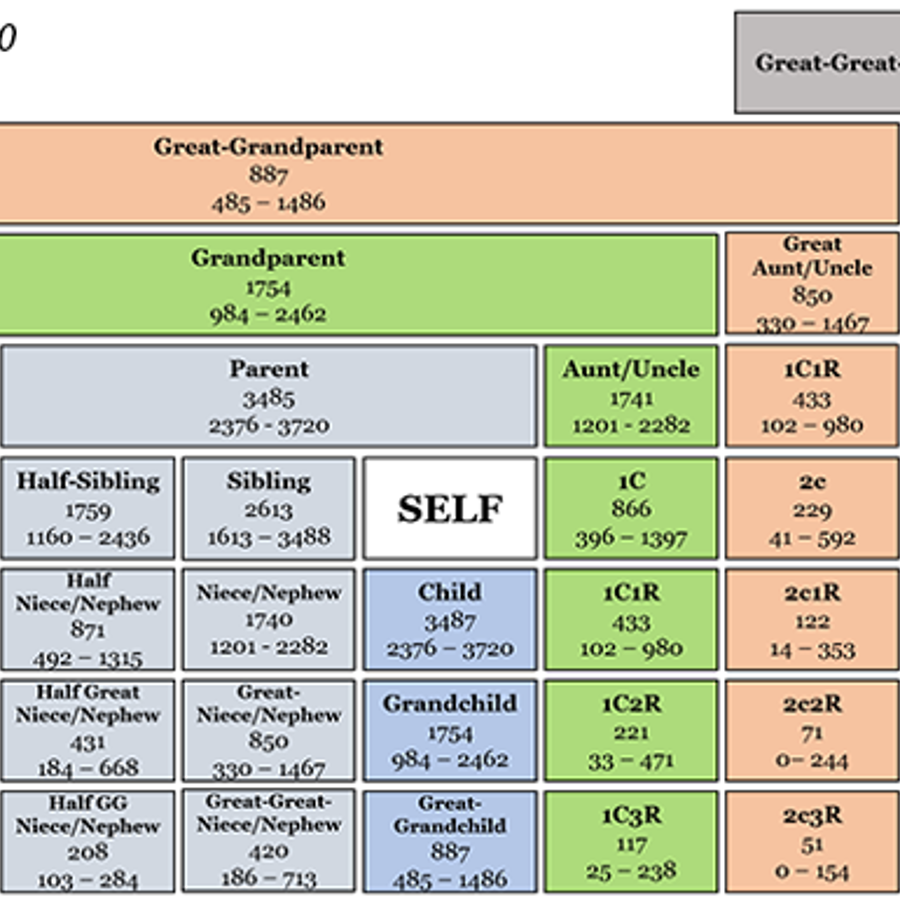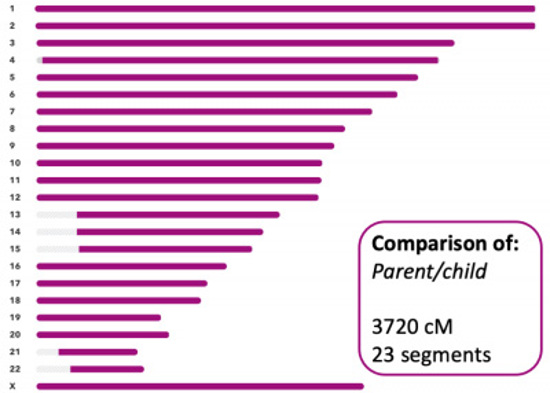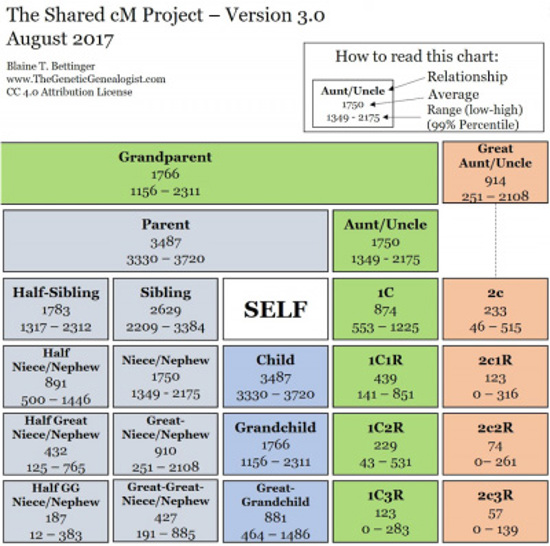
What’s the difference between shared centimorgans and shared segments?
November 11, 2019

- Related Topics:
- Common questions,
- Consumer genetic testing,
- DNA sequencing,
- Genomics,
- Bioinformatics,
- Relatedness
A curious adult from Tennessee asks:
“What’s the difference between shared centimorgans and shared segments?”
A centimorgan (abbreviated as “cM”) describes the length of a piece of DNA. It is a unit of measurement. More specifically, it measures the distance between two chromosome positions.
A shared DNA segment is a chunk of genetic material shared between two individuals. The length of a segment is reported in centimorgans.
When you’re looking at DNA comparisons, the “shared cM” is the total length of the DNA you share with a person. The “shared segments” are how many blocks that matching DNA is broken into.
Segments: chunks of DNA
Within our cells, our DNA is packaged into structures called chromosomes. A typical human has 23 pairs of chromosomes. One of each pair comes from mom, and one from dad.
When genetic testing companies analyze your DNA, they compare you and another person to identify possible genetic matches. When two people show up as a match, the company is able to identify where the DNA is the same: a shared DNA segment.
If you compare your DNA to your mom’s, you would share 23 segments of DNA. They’re really long segments – entire chromosomes!

Centimorgans: length of DNA
The length of a piece of DNA is measured in centimorgans. The total length of all your chromosomes combined is around 7400 cM.
Since a person inherits half of their DNA from each parent, you share about 3700 cM with each parent. The exact number for each parent/child relationship can vary slightly, but not by a lot.
If you look at the DNA comparison above, the father/daughter share 23 segments of DNA. If you measure the length of each of these segments, and then add them together, the total length of shared DNA is 3718cM. That’s pretty average for a parent/child!
Interpreting shared DNA
A parent/child relationship is pretty easy to identify. But what about more distant relatives? How do you interpret these different numbers?
The number of DNA segments that you share with someone and the size of the segments can give clues for how likely you may be related. However, you cannot be sure about how you are related to someone just based on shared segments.
For example, take a look at this comparison of a woman and her grandmother:

The number of shared segments is very similar to the number shared with a parent.
But if you look at the length of the segments, you can see they are all shorter than the segments shared between father/daughter. If you add up the length of all the shared DNA, it’s 1524cM. Much less than parent/child!
Similarly, take a look at this comparison of a woman and her first cousin once removed:

They share 18 segments—not that much less than a parent/child, or the grandparent/grandchild example. But these segments are all very short. The total length of the shared DNA is only 546cM.
The total number of centimorgans that you share with a match is typically a good indicator of how closely related you are to someone else.
But shared cM can’t always tell you exactly how you’re related to someone. Different types of relationships may share similar amounts of DNA.
For example, 546cM is a normal amount of DNA for first cousins once removed to share. But it could be an amount shared with a great-great aunt, a half first cousin, a great grandparent, a great nephew, and more!

Curious to know how you may be related to a match based on the total number of cM you share? You can play around with an interactive version here!

Author: Tiffany Nguyen
When this answer was published in 2019, Tiffany was a student in the Stanford MS Program in Human Genetics and Genetic Counseling. She wrote this answer while participating in the Stanford at The Tech program.
 Skip Navigation
Skip Navigation
